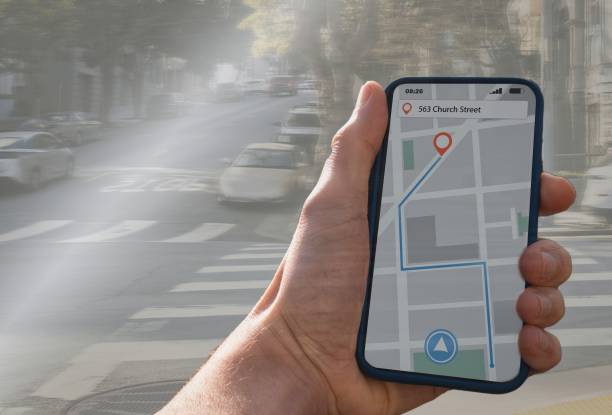In the modern digital landscape, creating your own app might seem like a daunting task, especially if you don’t have coding experience. But did you know you can create an offline map app without writing a single line of code? Whether you’re an entrepreneur, a small business owner, or someone with a groundbreaking idea, no-code solutions make app development more accessible than ever.
This guide will walk you through everything you need to know about building an offline map app, the tools to use, and why partnering with a mobile app development company in the USA can elevate your vision to new heights.
Why Offline Maps Are a Game-Changer
Offline maps are indispensable for travelers, delivery services, hikers, and more. Unlike traditional map apps that require a constant internet connection, offline maps allow users to access essential navigation features without relying on cellular data or Wi-Fi.
Some key benefits include:
- Reliability in remote areas
- Cost-saving for users by reducing data usage
- Enhanced privacy without constant online tracking
With these advantages in mind, building an offline map app is not just practical but also highly marketable.
The Rise of No-Code App Development
No-code platforms have revolutionized the tech industry by enabling anyone to develop functional apps without technical expertise. These platforms come with pre-built templates, drag-and-drop interfaces, and user-friendly tools.
Some popular no-code platforms include:
- Glide
- Adalo
- Thunkable
- Bubble
These tools empower you to build apps quickly, reduce development costs, and launch to market faster.
Planning Your Offline Map App
Define Your App’s Purpose
Before diving into development, clarify what you want your app to achieve. Ask yourself:
- Who is my target audience?
- What unique features will my app provide?
- How will I monetize the app?
For example, if you’re targeting hikers, you might want to include trail guides, terrain views, and offline GPS functionality.
Research Competitors
Analyze existing apps to identify gaps you can fill. Take note of their features, user reviews, and design elements to craft an app that stands out.
Key Features to Include in Your Offline Map App
A successful offline map app should prioritize user experience and functionality. Here are some must-have features:
Offline Access
The cornerstone of your app. Ensure users can download maps for offline use and access them without any connectivity.
GPS Tracking
Allow real-time location tracking even in offline mode.
Customizable Maps
Enable users to add personal markers, notes, or routes to the map.
Search Functionality
Include offline search to help users find locations, landmarks, or businesses.
Interactive Layers
Offer terrain views, traffic overlays, or satellite imagery.
User-Friendly Interface
Keep the design intuitive to cater to a diverse user base.
Step-by-Step Guide to Building Your App
Choose a No-Code Platform
Select a no-code platform that supports offline functionality. Platforms like Thunkable or Glide are great for this purpose.
Gather Map Data
Use APIs like Google Maps or OpenStreetMap to source accurate and detailed map data. OpenStreetMap is particularly useful for offline functionality.
Design Your App
Use the drag-and-drop tools of your chosen platform to design the app. Focus on clean layouts and easy navigation.
Add Features
Incorporate essential features like offline access, GPS, and search functionality through plugins or built-in platform tools.
Test Your App
Before launching, test your app extensively to ensure it works seamlessly, especially in offline mode.
Launch and Promote
Once satisfied, publish your app on platforms like the Google Play Store or Apple App Store.
Advantages of Partnering with a Mobile App Development Company
While no-code platforms make development easier, collaborating with a mobile app development company in the USA can elevate your project. These professionals bring:
- Expert insights to refine your app idea
- Customization options for unique features
- Advanced security for user data
- Scalability to grow with user demand
Their experience ensures your app isn’t just functional but also competitive in the market.
Monetizing Your Offline Map App
- To make your app profitable, consider these monetization strategies:
- In-App Purchases: Offer premium features like additional map layers or ad-free usage.
- Advertisements: Integrate non-intrusive ads to generate revenue.
- Subscription Models: Charge users for access to exclusive content or advanced tools.
Challenges and How to Overcome Them
Building an offline map app isn’t without hurdles. Common challenges include:
- Data Storage: Large offline maps can consume significant device space. Address this by allowing users to download specific regions.
- Accuracy: Ensure your map data is up-to-date to maintain reliability.
Regular updates and user feedback loops can help overcome these challenges effectively.
Promoting Your App
Marketing is crucial to your app’s success. Use these strategies to gain visibility:
- Leverage Social Media: Highlight unique features and share user stories.
- Optimize App Store Listings: Use keywords like “offline maps” to improve discoverability.
- Collaborate with Influencers: Partner with travel or tech influencers to reach your target audience.
Conclusion
Creating an offline map app without knowing how to code is entirely possible, thanks to no-code platforms. By planning carefully, incorporating essential features, and partnering with a mobile app development company in the USA, you can deliver an app that meets user needs and stands out in the market.

